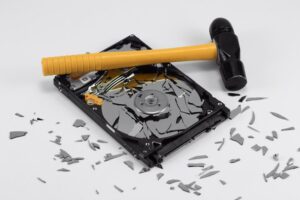3 Innovations And Trends In Ultrasonic Cleaning

However cutting-edge a technology is, it must always be improved upon. Technology is a fluid, ever-changing landscape that seeks to continuously make products better, cheaper, more functional, and easier to use.
Ultrasonic cleaning solutions haven’t been spared that innovation too. Since its discovery, several market players have introduced new features with their product lines in a bid to improve their overall functionality and add increased value for buyers.
Alongside innovations, there have been several trends that have dotted the lifespan of the ultrasonic cleaning industry in recent years. In this piece, we’re going to look at a few innovations and trends that have made their way into ultrasonic cleaning technology and their impact. But first, a quick recap of the technology itself.
What is Ultrasonic Cleaning?
In simple terms, ultrasonic cleaning takes advantage of the power of rapid sound waves to remove dirt, dust, grease, sand, and other contaminants from the surface of the material being cleaned.
Usually, the entire rig would consist of a power generator, a transducer, and a tank. The generator regulates and supplies power to the transducer which, itself, creates the high-frequency soundwaves required for cleaning.
These soundwaves are then transferred to the fluid housed in the tank. Cleaning fluid could either be just water or a mixture of chemicals and detergents. The vibrations from the transducer create cavitation bubbles in the fluid. These bubbles explode and strip the work material of any contaminants.
Recent Innovations and Trends
With the recap out of the way, let’s now examine some of the innovations that have revolutionized the ultrasonic cleaning solutions market.
Growth in the Several Standalone Ultrasonic Cleaning Markets
By definition, the standalone market for ultrasonic cleaning solutions is delineated based on factors like power capacity, output capacity, and tank size.
On the basis of power output from generators, the market is segmented into 250-500, 500-1,000, 1,000-2,000, 2,000-5,000, 5,000-10,000, and 10,000+ watts. The capacity segment ranges from as little as 5 liters to as much as 500 liters.
Unsurprisingly, the different standalone markets are projected to rise by an average of around 5% across the board. This fact is mostly due to an increased demand for the technology across product verticals like metal and machinery, jewelry and gems, optics, aerospace, pharmaceuticals, and others.
Furthermore, this growing demand is set to create increased opportunities across the industry. Advancements in things like automation are already underway, allowing for improved safety in the cleaning operation.
Lastly, the eco-friendly nature of ultrasonic cleaning has also played a part in the dramatic increase in its demand from sectors like healthcare and chemical manufacturing.
Megasonic Cleaning
On to the innovation aspect for a quick minute. Megasonic cleaning has been proposed as the technological successor to conventional ultrasonic cleaning techniques and, while it hasn’t taken off, it’s shaping up to enter the consumer market in a few years.
The main difference between ultrasonic and megasonic cleaning is that the latter is a generally gentler cleaning mechanism and is also less likely to cause damage to the part being cleaned. While the former produces random cavitations, megasonic cleaning produces controlled cavitation.
Megasonic cleaning relies on frequencies of between 0.8-2 MHz, compared to the 20-200 kHz range for ultrasonic cleaning. These higher frequencies result in cavitation at a much smaller scale.
Currently, megasonic cleaning has seen the most use in industries that deal with silicon wafers, medical implants, and industrial parts. It is perfectly suited for small, fragile parts that are susceptible to considerable damage with immense pressure.
While megasonic cleaning isn’t currently used on the same objects as its ultrasonic counterpart, industry analysts see a future where some of its principles – like higher frequency cleaning – can trickle over to the conventional ultrasonic use cases.
The Emergence of New Solvents
The solution or solvent contained in the ultrasonic tank has always been crucial to the effectiveness of the entire cleaning operation. In the technology’s early days, ordinary water was mostly used. Occasionally, it would be mixed in with detergent to further soften the contaminants for removal.
These days, however, a whole host of solvent combinations have emerged with the aim of cleaning surfaces faster and more efficiently. A variety of contaminants such as grease, dirt, sand, oil, and dust particles could inhabit the surface of the object being cleaned. Sometimes, a special mixture is required to remove them.
Acidic cleaner solutions are defined as those with a pH of around 1.6 in concentrate form. Usually, they’re diluted at around 1-5% with water. Ideally, these solvents are great for removing corrosion, water damage, lime deposits, grease, oil, and oxide layers. They’re suited for PCB metals, plastics, glass, and copper.
Alkaline cleaner solutions usually have a pH level of around 13. It is used mostly with industrial applications. It is best suited for contaminants like soot, wax, combustion residue, and oils. Alongside metals, alkaline solutions work well on rubber, ceramics, and plastics.
Sometimes, the ammonia content in these alkaline solutions leaves a bright shiny surface when used on materials like brass and copper.
Last, we have neutral cleaning solutions. These sit between acidic and alkaline solutions on the pH meter – at around 9.3. When diluted with water (at 2-5%), it provides a gentle cleaning action with highly sensitive parts and ornaments. Ideally, neutral solutions are great with surfaces like aluminum and other light metal alloys.
In Conclusion
Ultrasonic cleaning, like any other field, is marked by trends, improvements, and innovation aimed at improving the quality of the cleaning process. Over the past few years, the duration, efficacy, and cost of ultrasonic cleaning have seen beneficial improvements – either through purposive research or simple trial and error.
The fact is: there isn’t really any room for any drastic overhaul when it comes to ultrasonic cleaning. The series of iterative improvements, over time, have simply accumulated and resulted in a cleaning technology that’s much cheaper and better than it was just years ago.
This article has gone over a few of those improvements. We’ve discussed how tanks now come in a more diverse range of sizes and incorporate more durable materials. We also went over megasonic cleaning as a new, high-tech parallel technology.






